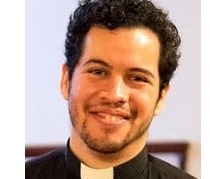Likewise the Spirit helps us in our weakness; for we do not know how to pray as we ought, but that very Spirit intercedes with sighs too deep for words.
Romans 8:26
I taught a class on prayer in the Anglican-Episcopal tradition this past Sunday. I wish I could point you to a recording of it, but the Zoom Webinar gods decided against it.
(Also, I forgot to press the “record” button. Such is life.)
I want to share a couple of things that have been on my mind since Sunday though. While I appreciate the rich theological tradition that gave birth to The Book of Common Prayer, I think of its contents as a “house” for our prayer life. It has many rooms and great amenities; some might even say it has good bones… but a house does not become a home until we live in it. Our joys and concerns turn a house into a home, as our daily routines fill in the space between the walls.
Similarly, the prayers of the Daily Office are not good simply because they are ancient, beautiful, or wise. They are good when we pour our lives into them—when we turn them into a home, so to speak, creating a space for communion with God as we begin to pray in earnest. If that isn’t the case, then our prayers are nothing more than empty phrases and cluttered words (Mt 6:7).
In the spirit of finding our way to said home, allow me to share a few guiding questions from Sunday. They are meant to help you figure out how to enter into the habit of prayer.
Where do you pray? Our prayer life may be a spiritual task, but that task is bound up in breathing, living bodies. We incarnate prayer, whether we like it or not. What kind of space do you need to pray? A special chair in the corner of a quiet room? A picture or religious icon to help center you? It doesn’t have to be fancy or explicitly religious. It just has to be a space that helps you set daily life aside to pray.
When do you pray? In the middle of a pandemic—when all of us are spending more time at home—the boundaries between home, work, and everything else get blurry. It helps to establish a specific time aside for reflection and contemplation. What time are you most likely to be able to pray? Is it very early in the morning, when no one else is up, or is it right at the end of the day? Is it while you are out on a walk or run?
How do you pray? Over the past few months, St. Paul’s has begun offering Morning Prayer services over Facebook Live at 8:00 a.m. every weekday morning. It is a readily available structure for prayer and silence, if you need it—but there are also so many other ways to pray! For people trying to find new ways to pray, I tend to ask: how have you experienced God’s presence and comfort in the past? How might that help you find a way to establish a habit of prayer now?
The answers to these questions may be as varied as the people who read this, but before you let guilt over your lack of discipline get to you, keep this in mind: establishing a regular habit of prayer is a hard thing to do. As with other habits, start small. Grant yourself the grace that God so freely bestows on us all, and take just one step—whatever that step might be.
— Fr. Javier


